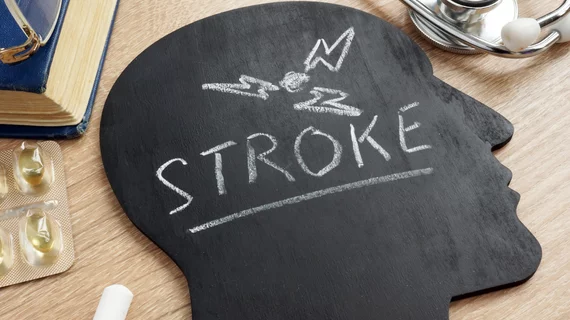Stroke thrombectomy outcomes similar between radiologists, fellowship-trained neurointerventionalists
Stroke outcomes are similar whether thrombectomy is delivered by a fellowship-trained neurointerventional physician or radiologists without such schooling, presenting an opportunity to increase access, according to research published Wednesday.
Varying types of specialists provide this minimally invasive procedure, which involves placing a catheter into the brain to remove the clot causing a stroke. Some have hypothesized that results are inferior when care is delivered by those who have not completed a fellowship, experts wrote in the Journal of Vascular and Interventional Radiology.
Researchers set out to test this theory, gathering data across eight hospitals that use both specialties. They discovered similar results within each institution, urging healthcare leaders to use either provider type interchangeably
“There was no significant difference in successful revascularization and good clinical outcomes between [interventional radiologists] and [neurointerventional] physicians,” David Sacks, MD, a radiologist with Tower Health in West Reading, Pennsylvania, and co-authors wrote Feb. 9. “Outcomes by IR were similar to NI outcomes from previously published trials and registries.”
The final study sample included more than 1,000 patients, with about 60% treated by radiologists and the rest served by neurointerventionalists. Median stroke onset to puncture time was similar between the two at 245 minutes for radiologists versus 253 for NI docs. Same for successful revascularization (81.8% vs. 82.4%) and return to independence (45.5% for radiology vs 50.1% for NI). After adjustments, physician specialty was not a significant predictor of quality clinical outcomes, the authors determined.
Providers face growing endovascular thrombectomy volumes following the publication of multiple trials and analyses showing the benefits of this treatment for large vessel occlusion acute ischemic strokes. Increased volume has led to stress among endovascular stroke physicians, with some hospitals relying on interventional rads to relieve the strain. Sacks et. al believe their study results provide support for this approach.
“This [data] may be useful to address coverage and access to stroke interventions,” they concluded.
Related Stroke Imaging Content:
Automated CT scoring system accurately predicts prognosis in stroke patients
New CT protocol uses scout images to expedite stroke patients' path to MRI
What decades of data tell us about stroke rates in the U.S.
Most Americans live within an hour of a stroke center
FDA warns providers about potential misuse of imaging-based software for stroke triage
Radiologists must change their approach to stroke care in the AI era
MRI findings associated with poor thrombectomy outcomes after stroke
Risk of recurrent stroke 48% higher among young marijuana users

